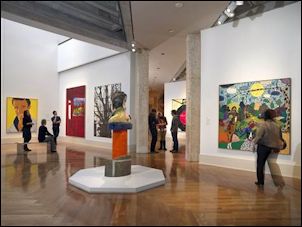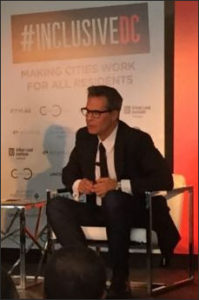
Richard Florida in Washington, D.C., last week. Photo credit: Washington Post.
In the inaugural edition of the Bacon’s Rebellion newsletter (back before there were blogs), I reviewed Richard Florida’s book, “The Rise of the Creative Class.” I was certain his work would spark a revolution in how Americans understood economic development in the Knowledge Economy, and I became an early follower.
The then-dominant paradigm of economic development focused on corporate recruitment, as epitomized here in the Old Dominion by the Virginia Economic Development Partnership. In that model of economic development, what corporations needed were utilities, Interstate access, low taxes, inexpensive real estate, and inexpensive, semi-skilled labor. But Florida documented that corporate investment was increasingly driven by a need to access human capital. Corporations, especially fast-growth technology companies, were expanding in locations where they could find skilled, educated, tech-savvy employees — an occupational cluster he dubbed the creative class.
In a break with the past, Florida observed, creatives weren’t attracted to regions with symphonies, operas, and ballets. They were moving to metros noted for openness to newcomers, social diversity, cultural tolerance, and a rich “street” culture. Instead of employees migrating to where the corporations were, corporations were migrating to where the employees were. To attract corporate investment, communities needed to attract the creatives.
Among other insights, Florida foresaw the decline of suburban office parks, which he disparagingly called “nerdistans,” which young people rejected in favor of the city experience of walkable neighborhoods and vibrant, participative cultural institutions. Through a series of books and publication of the “CityLab” blog, Florida transformed the nation’s thinking about economic development — especially in liberal, Democratic cities where talk of tolerance and openness came naturally.
I followed Florida for several years, but slowly lost interest as his shtick became increasingly political. Not only did liberal, Democratic cities embrace him, he embraced them in turn. The new Creative Class paradigm seemed to relegate smaller, less ethnically diverse, more culturally conservative cities to the dust heap of the economy, and Florida seemed to overlook obvious flaws in the Blue State model such as excessive regulation, high taxes and unfunded pension liabilities. To my mind, he had captured important truths but had shot way past the mark.
Well, it seems that Florida has written a new book, “The New Urban Crisis.” I have yet to read the book, but Florida appeared at a panel discussion at the Union Market in Washington, D.C., a week ago to discuss his latest thinking. From the Washington Post:
Somewhere along the way … Florida realized that the workers he so cajoled were eating their cities alive.
In places like New York, San Francisco, Seattle and arguably Washington, the mostly white, young and wealthy “creative class” has so fervently flocked to urban neighborhoods that they have effectively pushed out huge populations of mostly blue-collar and often poor or minority residents.
“I think, to be honest, I and others didn’t realize the contradictory effect,” Florida said Tuesday at a panel discussion. He said he realizes now that prompting creative types to cluster in small areas clearly drove living costs to such heights that low-income and oftentimes middle-income households have been forced elsewhere, creating a divide he did not anticipate.
“We are cramming ourselves into this limited amount of space. And at the same time that the super-affluent, the advantaged, the creative class — we could go on and on [with what to call them] — the techies, global super-rich, absentee investors, invest in these cities, they push others out … and it carves these divides,” he said. …
Although he still champions investments in urban areas, at the panel event Florida said the criticism had made a mark. “To be seen as the neoliberal devil, foisting gentrification on cities, is not a situation I like to be seen in,” he said.
Bacon’s bottom line: Members of the creative class may be tolerant, open, hip and edgy, but they, like everyone else, are NIMBYs. Once they move into a neighborhood, they like things the way they are, and they don’t want greedy developers building new projects that block their views, generate traffic, alter the architectural character of the neighborhood or otherwise inconvenience them. In Creative Class enclaves, NIMBYism restricts residential development, which aggravates housing scarcity, which drives up prices, which displaces the poor, the working class, and increasingly the middle class.
Members of the Creative Class happily wield government power to mold a world to their liking. They have no compunction about enacting laws and regulations that encumber economic activity — usually the economic activity of others — as long as it furthers their own goals. Thus has California transformed the coastal ribbon into an environmental paradise attractive to the Creative Class while devastating the farming and manufacturing economies of inland cities. Gross inequality is not the inevitable result of wealth creation, it is the inevitable result of wealth creation in a liberal Democratic political/cultural setting.
That’s the way I see it. I doubt Florida will see it the same. But I have enough respect for his thinking that I will read his latest work, and I reserve the right to change my mind.




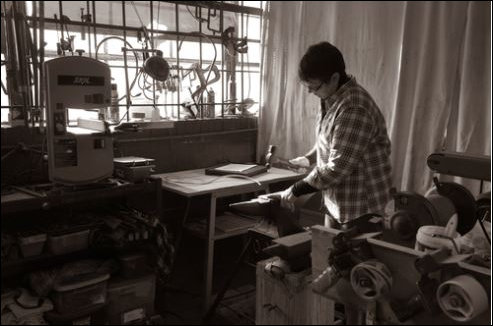

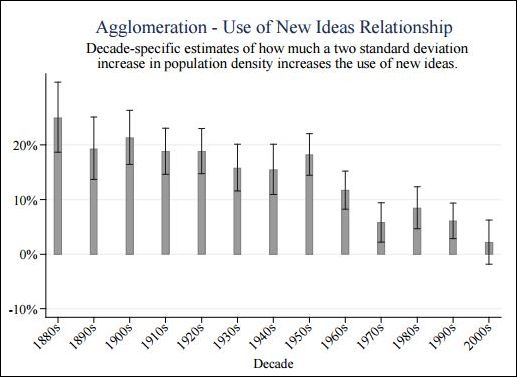
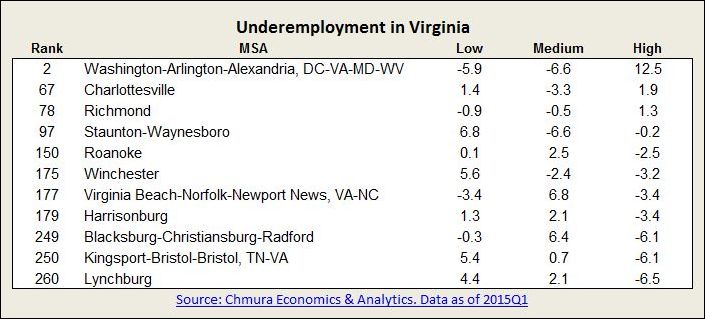

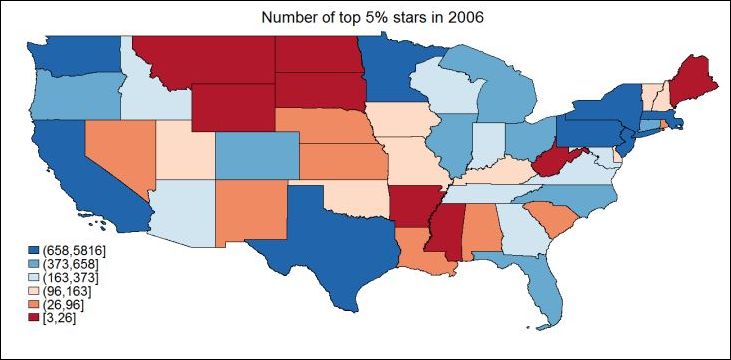



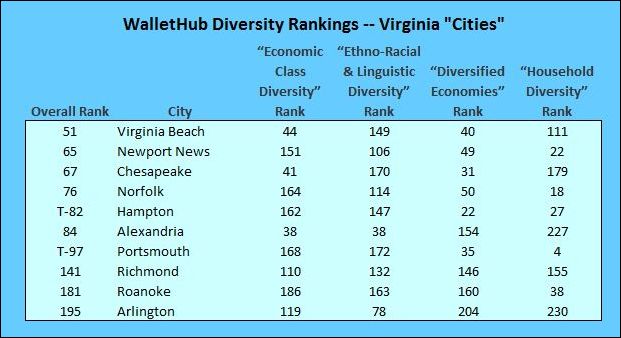
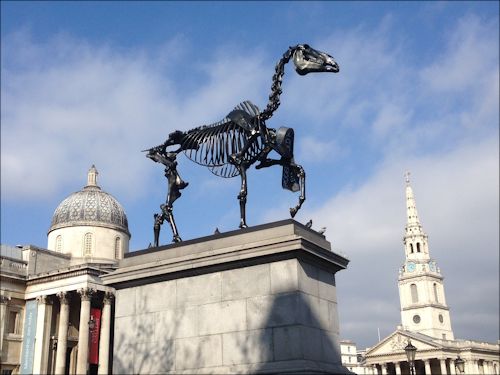
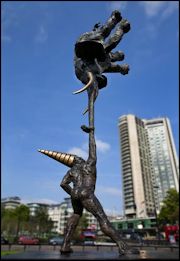 I suppose one reaction to such art would be to declare it symptomatic of our civilization’s self-loathing — a sign of decay. There’s probably some sense to that view. But I have a second reaction. I find the statue amusing. It makes a nice change of pace from dead heroes. Google “whimsical statues in London” and you’ll find an extraordinary variety of creative works, such as the one at right of a jester holding up an elephant by its trunk. It’s all part of “cool Britannia,” part of what makes London such a fun, exciting, world-class city.
I suppose one reaction to such art would be to declare it symptomatic of our civilization’s self-loathing — a sign of decay. There’s probably some sense to that view. But I have a second reaction. I find the statue amusing. It makes a nice change of pace from dead heroes. Google “whimsical statues in London” and you’ll find an extraordinary variety of creative works, such as the one at right of a jester holding up an elephant by its trunk. It’s all part of “cool Britannia,” part of what makes London such a fun, exciting, world-class city.